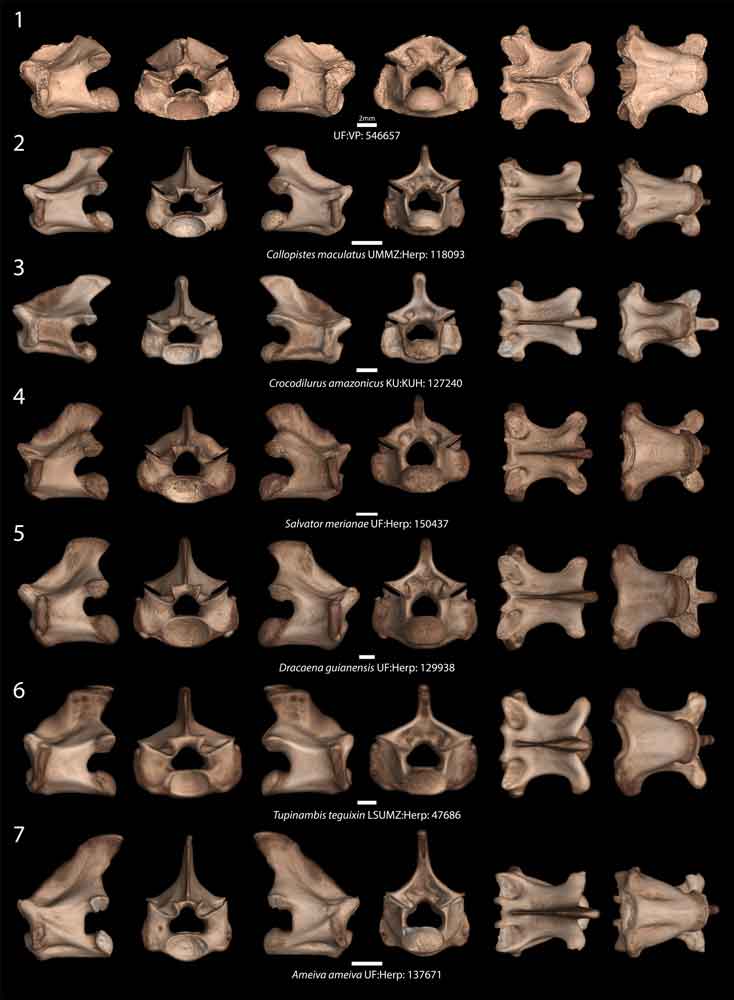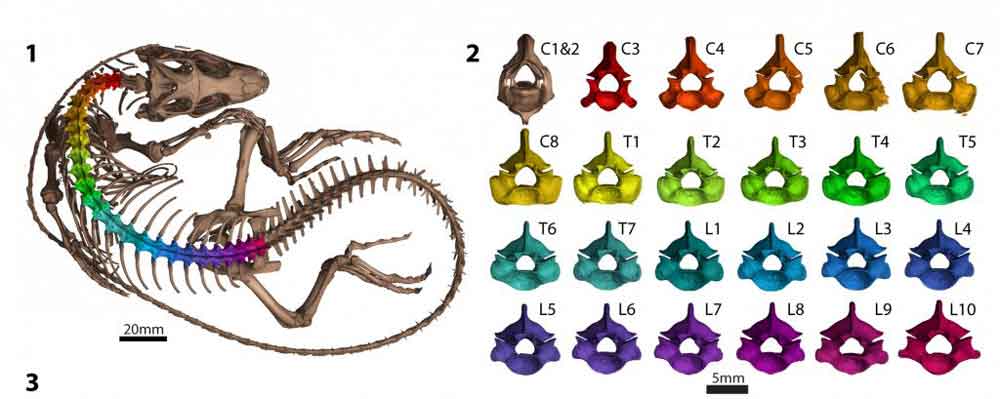Wautaugategu formidus lived during the Middle Miocene Climatic Optimum, between 17.5 to 14.5 million years ago.
Researchers announced in a study in the Journal of Paleontology that tegu lizards, a large lizard that hails from South America and is popular with advanced reptile keepers, lived in what is now Georgia and Florida from between 17.5 to 14.5 million years ago. This was when the region was about 3 degrees Celsius warmer than today, the Arctic had no ice and tropical climates were further north than they are today.
The discovery of the tegu being in the United States that long ago is based off a single half-inch wide vertebra fossil that was found in a fuller’s earth clay mine in Georgia in the early 2000s. Paleontologists with the Florida Museum of Natural History were alerted by workers at the mine of the fossil and it and many other fossils were retrieved before the mine was closed. The vertebra sat in storage for nearly 20 years, unidentified, until Jason Bourque, a fossil preparator with the Florida Museum of Natural History’s vertebrate paleontology division determined the vertebra was from a tegu lizard.

Stanley used a machine learning technique to automatically recognize and fit landmarks to over 100 vertebra images used in the analysis.
IMAGE FROM BOURQUE AND STANLEY, 2025
“We have all these mystery boxes of fossil bones, so I was digging through, and I kept coming across this one vertebra,” Bourque said in a news release put out by the museum. “I could not figure out what it was. I put it away for a while. Then I’d come back and say: Is it a lizard? Is it a snake? In the back of my mind for years and years, it just sat there.” Bourque then happened to be working on a different research paper when he happened across a tegu vertebra in another study and realized the fossil was that of a tegu. “I saw the tegu, and I just knew right away that’s what this fossil was,” Bourque said.
Bourque then worked with Edward Stanley, director of the museum’s digital imaging laboratory on definitively identifying the fossil. They determined via CT scan and a new machine learning technique that the fossil was a tegu vertebra but didn’t match any tegu specimens in the database. They determined it to be a new species and gave it the name Wautaugategu formidus, with Wautaugategu named after the forest in which the fossil was discovered and formidus, which means warm in Latin.
The researchers believe Wautaugategu formidus was around for a short period of time in what is now Florida/Georgia because the sea level was higher at that time with the vast majority of Florida underwater. They surmise the tegus may have swam from South America into what is now Georgia. But the climate changed everything and they disappeared.
“We don’t have any record of these lizards before that event, and we don’t have any records of them after that event. It seems they were here just for a blip, during that really warm period,” Bourque said.
An abstract of the paper, “A tegu-like lizard (Teiidae, Tupinambinae) from the Middle Miocene Climatic Optimum of the southeastern United States” can be read on the Cambridge University Press website.



